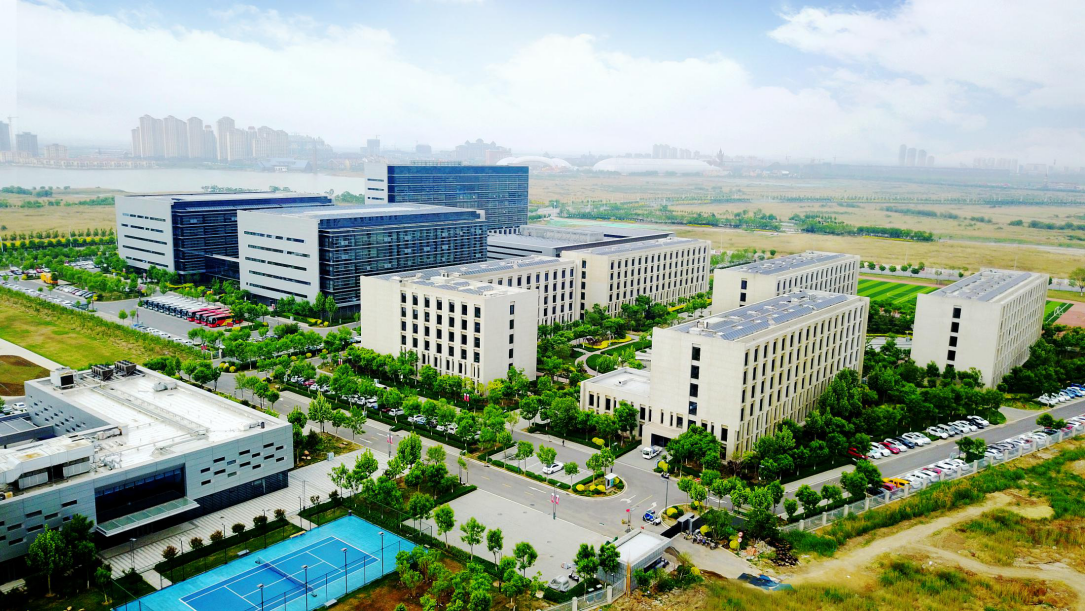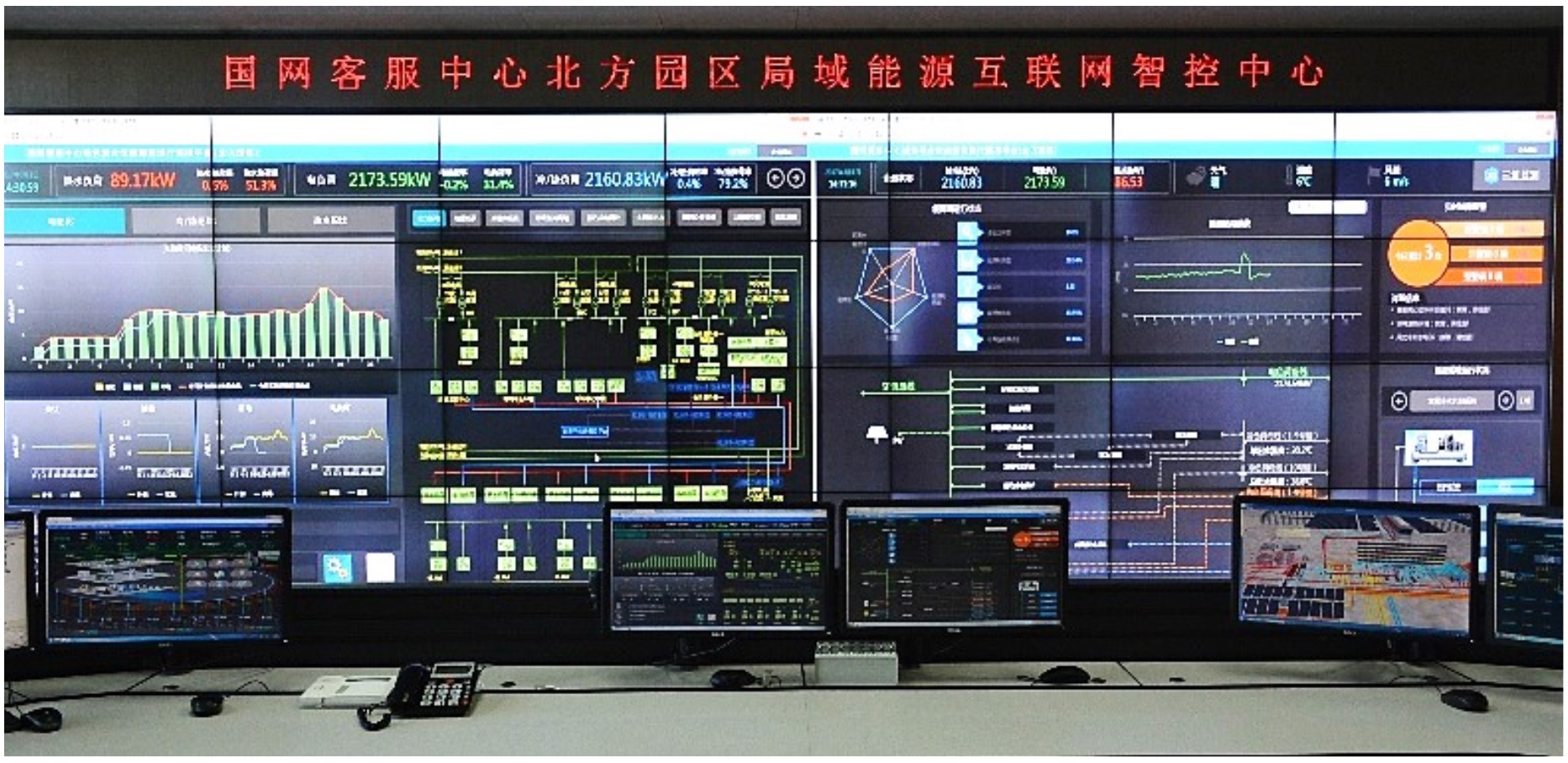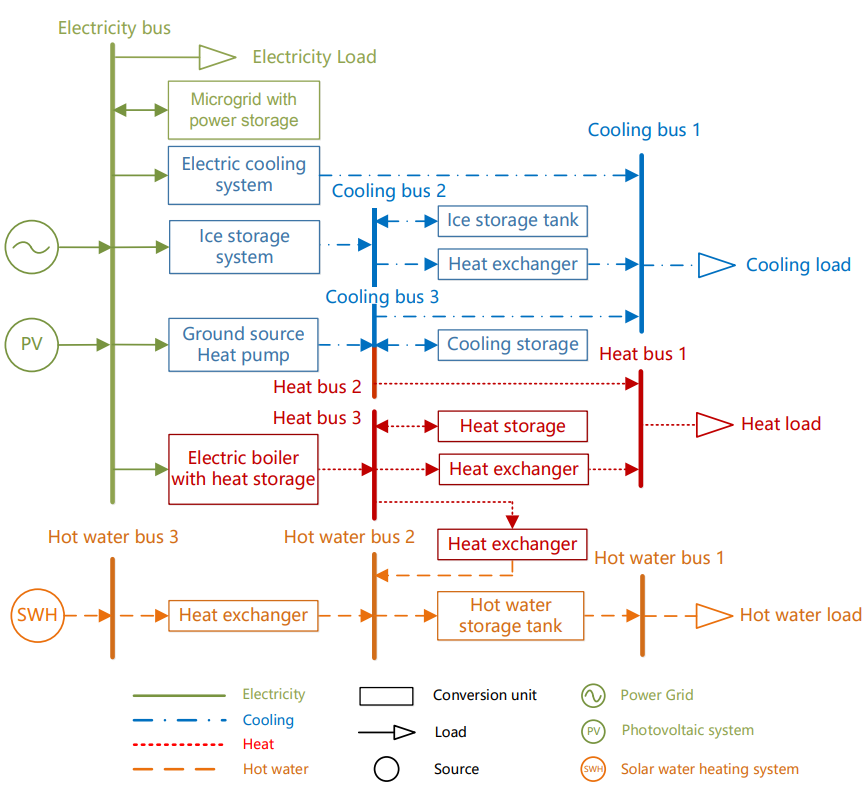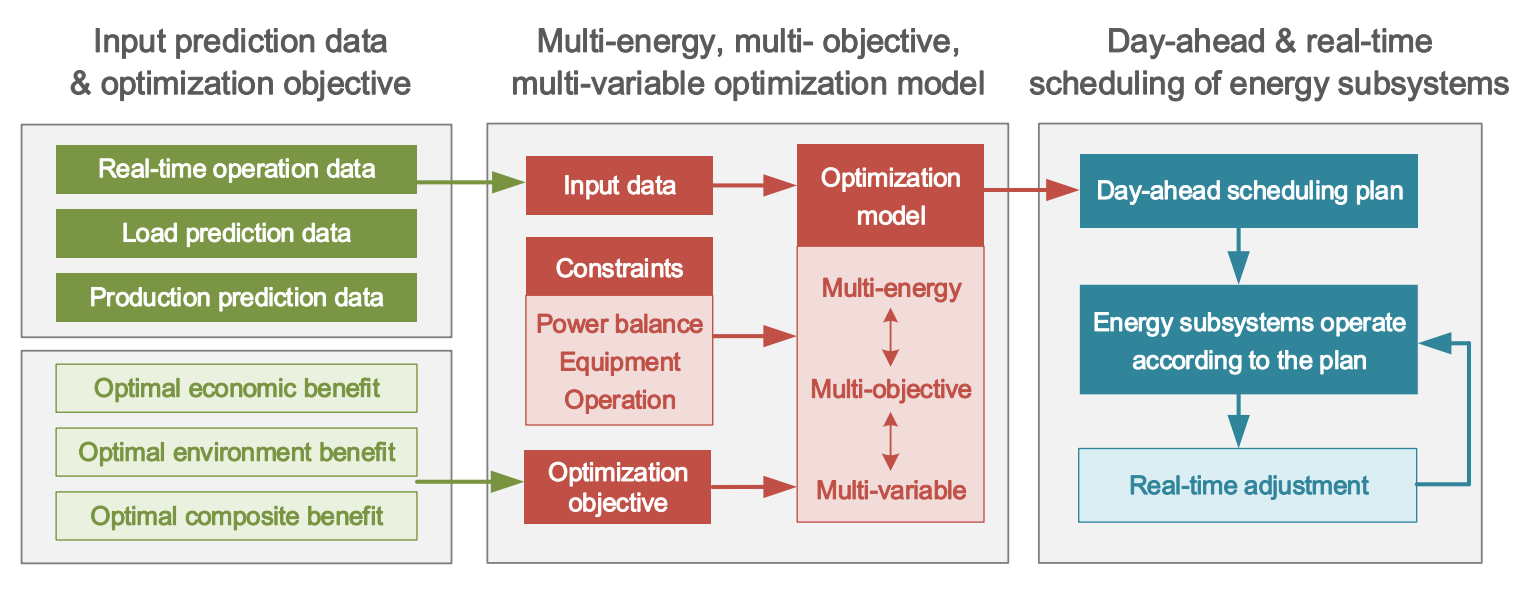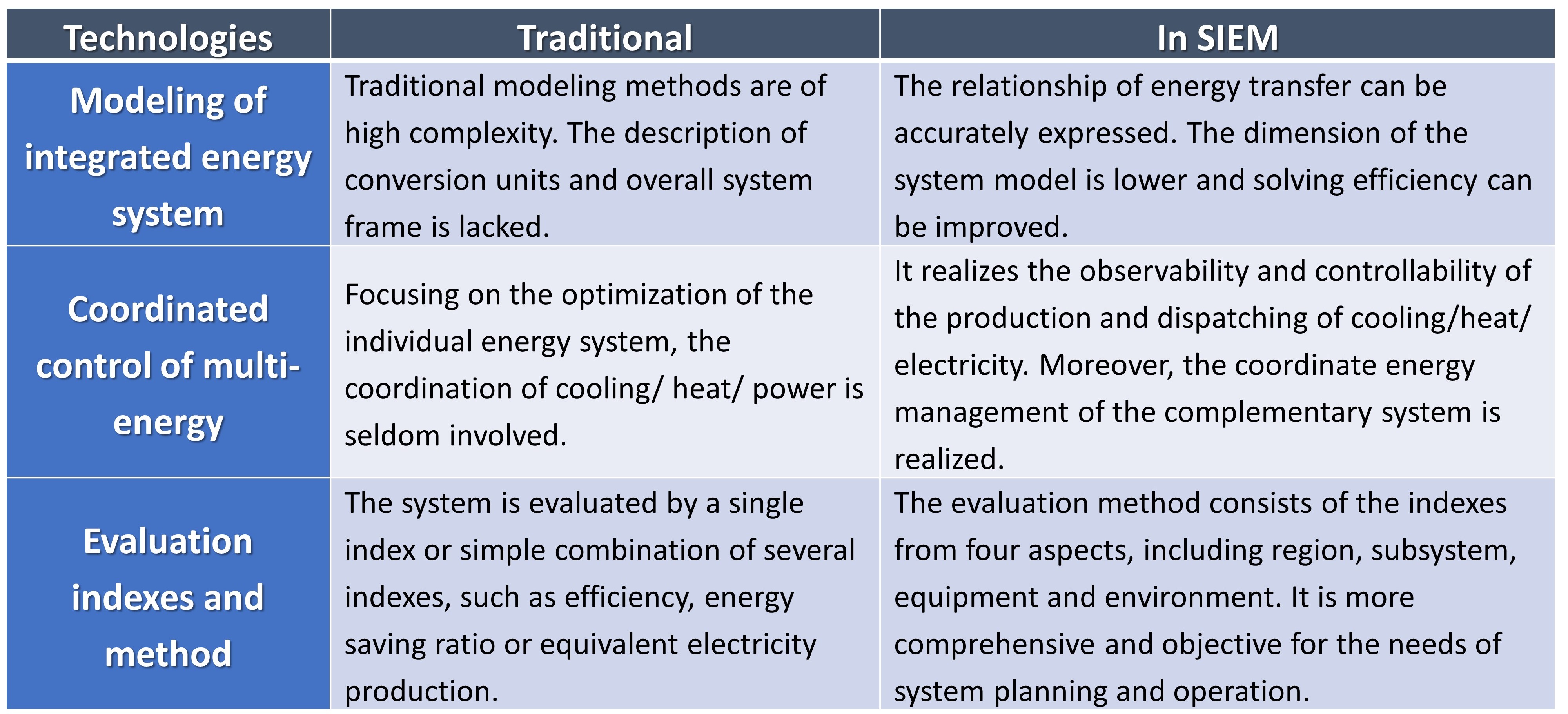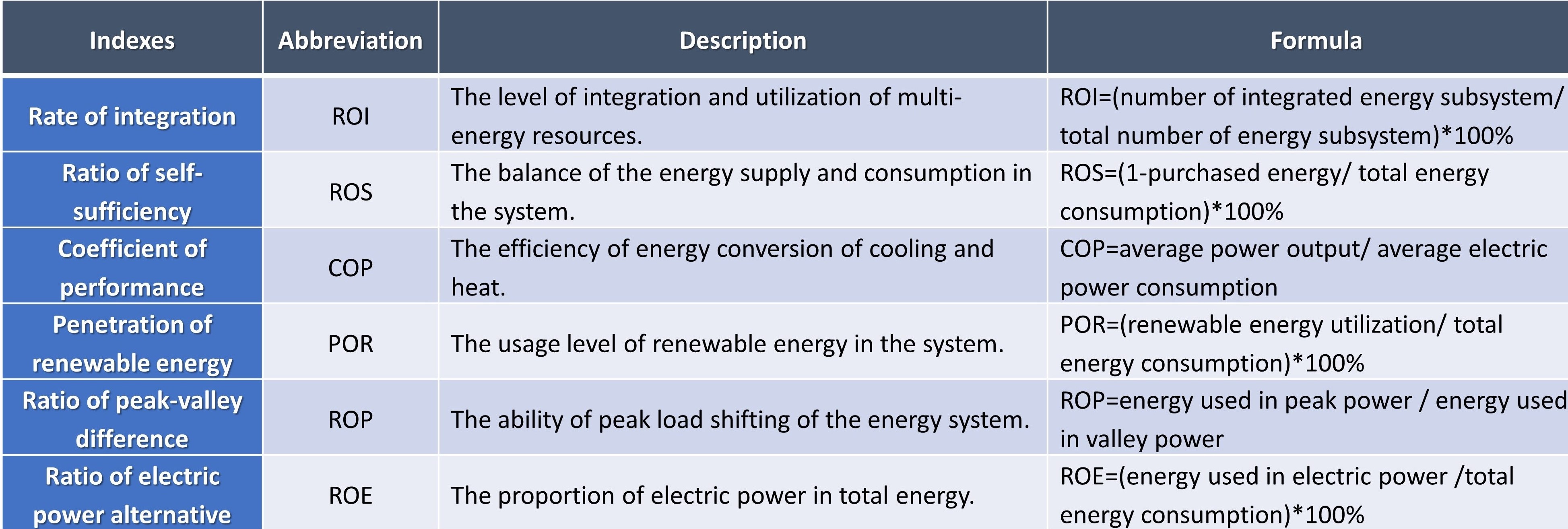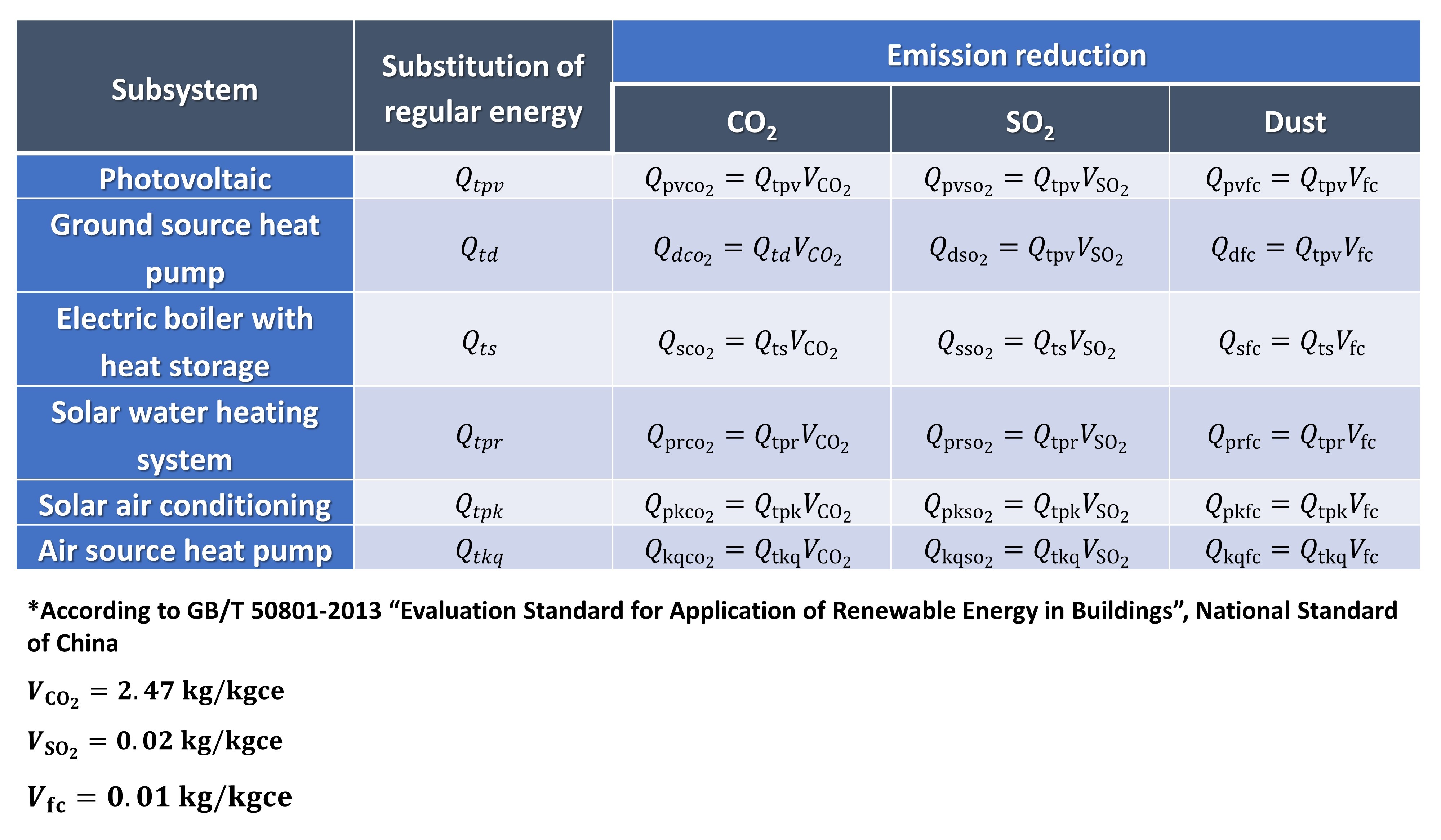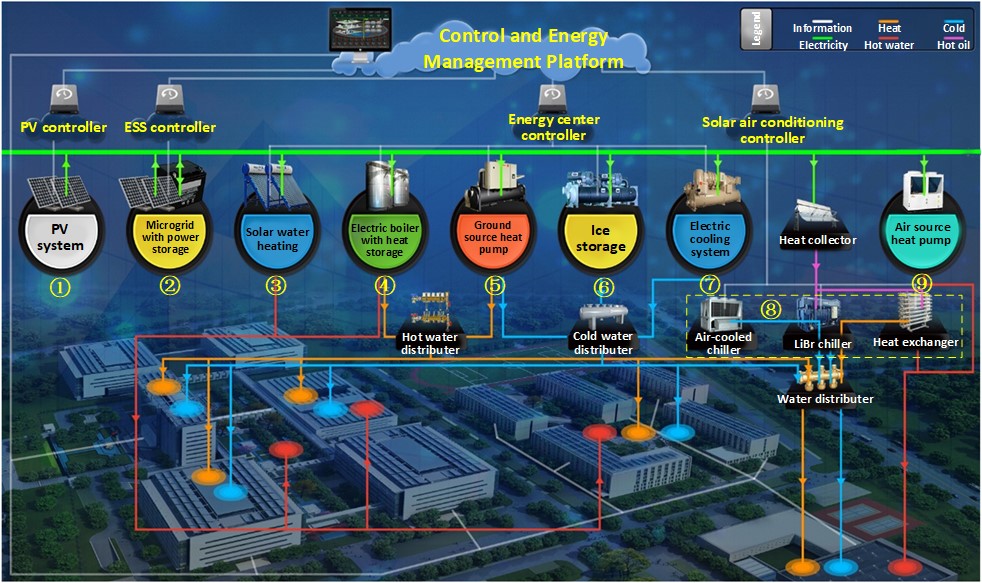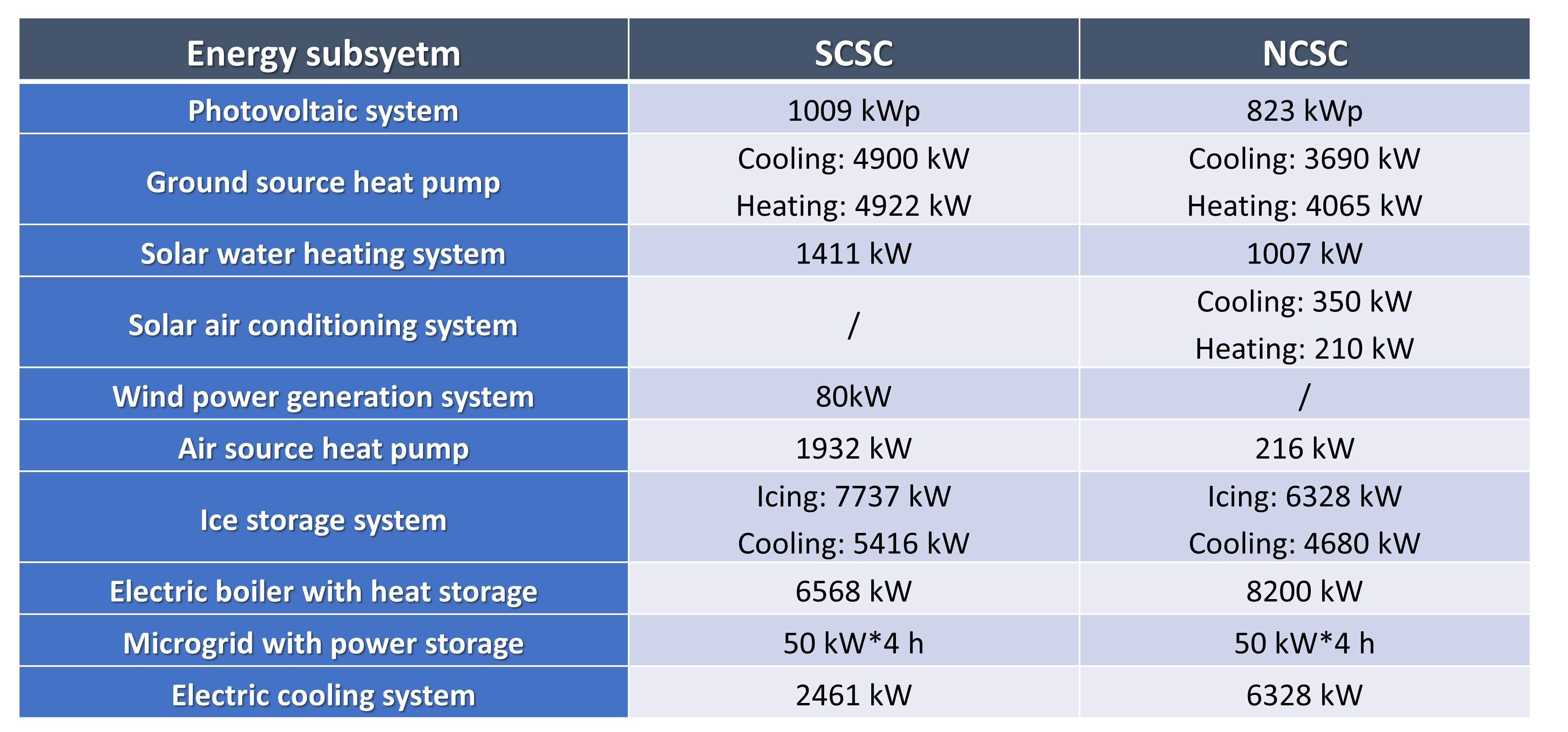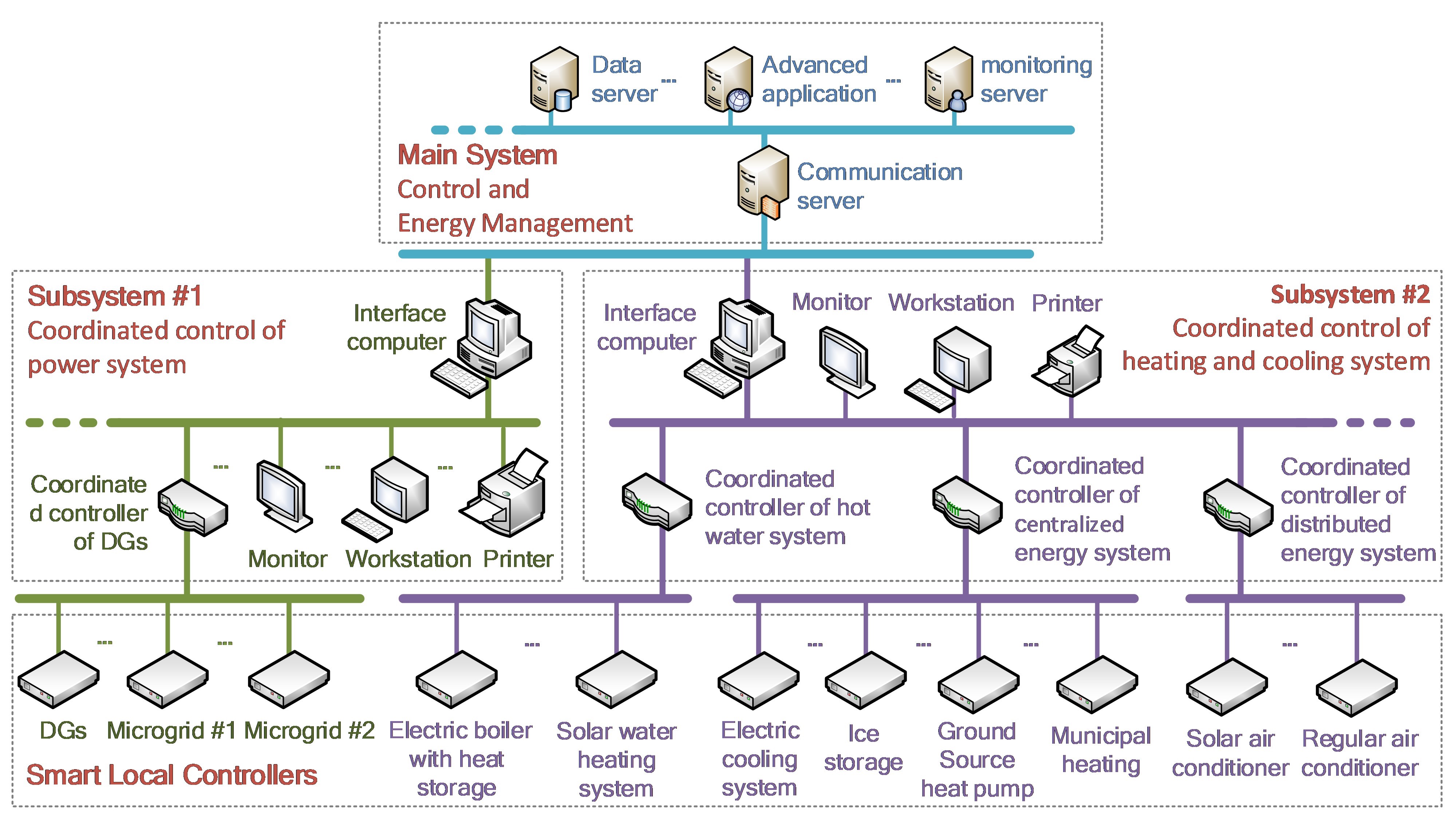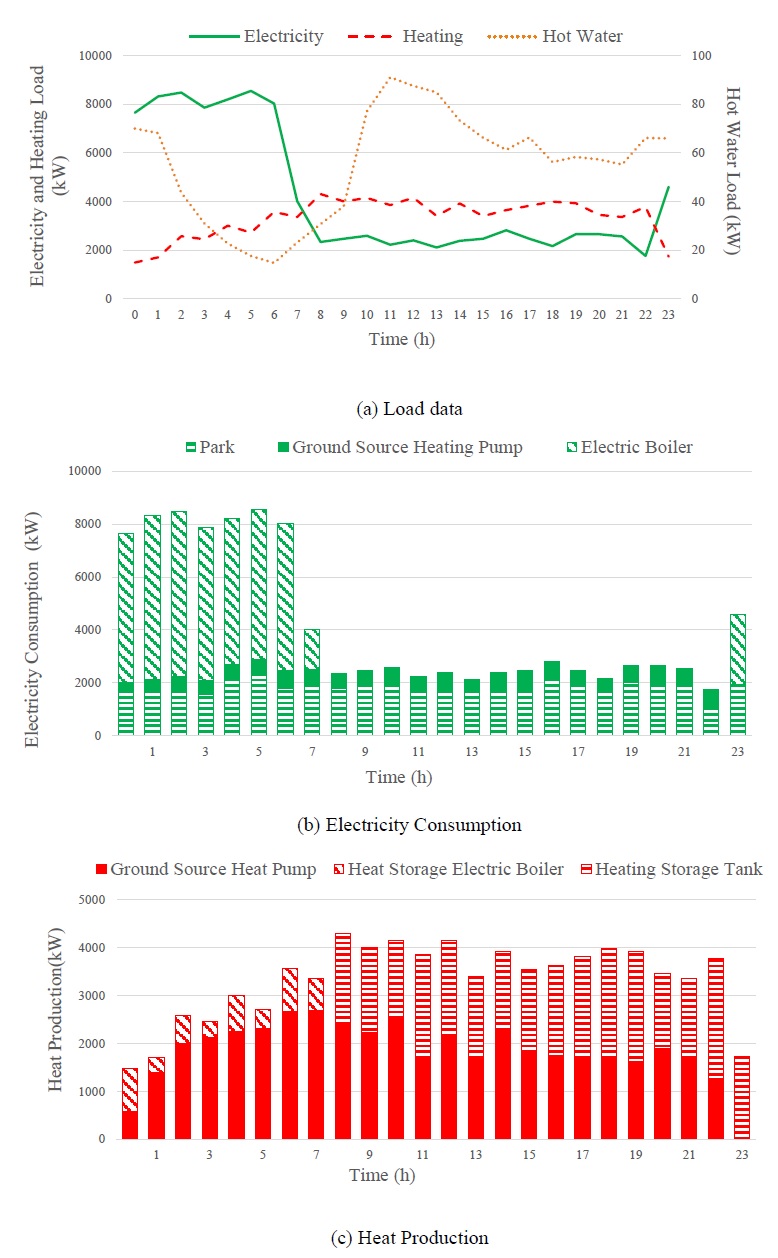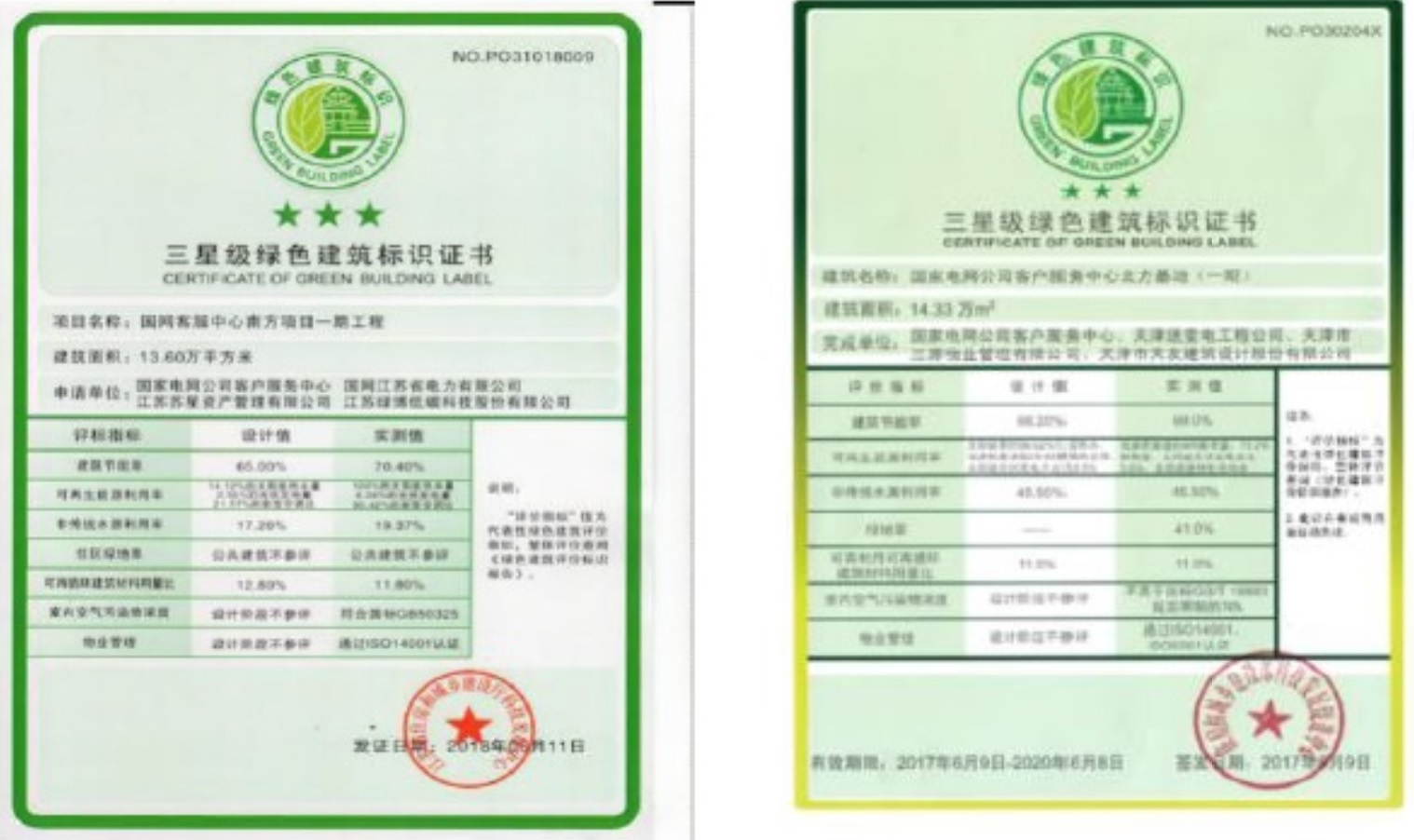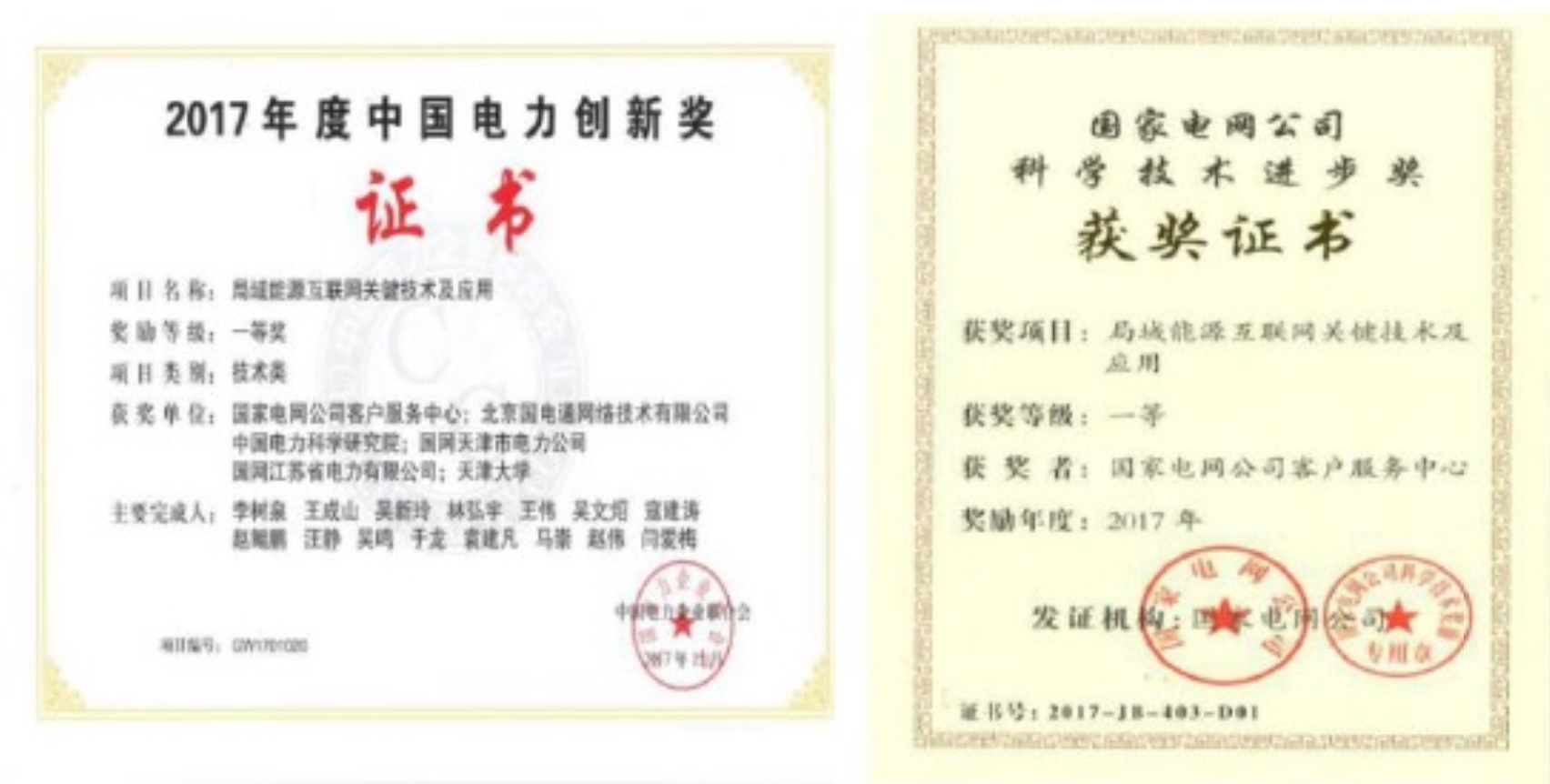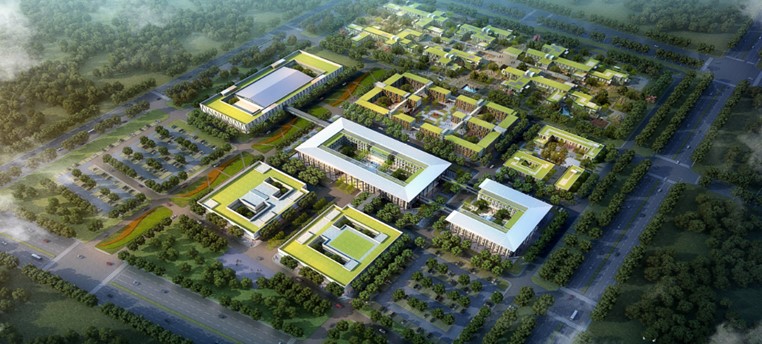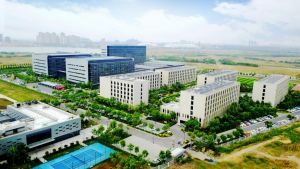
Customer Service Center (CSC) is responsible for providing online customer services for the service area of State Grid Corporation of China (SGCC), which covers 26 provinces and affects over 1.1 billion people. It provides a 24-hour all year service for individual and enterprise users including blackout notice, customer information inquiries, business consultation, and business processing. CSC has two parks, the Northern Customer Service Center (NCSC) and Southern Customer Service Center (SCSC). NCSC, located in Tianjin, has a total construction area of 143,000 square meters. SCSC, located in Nanjing, has a total construction area of 136,000 square meters. NCSC and SCSC can accommodate 5200 employees’ working and living. As a result of high population density and working schedule, the variety and high-level of energy demands pose new challenges for energy supply solutions of electricity, heat, cooling, and hot water. Thus, a Smart Integrated Energy Microgrid (SIEM) is built in CSC. The energy facilities of SIEM include ground source heat pump, ice storage system, electric boiler with heat storage, solar water heating system, photovoltaic system, and electric distribution networks. Moreover, a control and energy management platform is developed to realize the intelligent coordinated dispatching of SIEM. The various demand of the park could be met with a lower operation cost and more environment-friendly way.
(a) Overview of NCSC
(b) Overview of SCSC
(c) Control and Energy Management Platform
Figure 1 Smart Integrated Energy Microgrid in CSC
1. Strategy
1.1 Innovativeness
1.1.1 Is the innovative concept come from the project itself or other existing programs?
With the acceleration of economic transition and urbanization of China, parks for technology-intensive industries and services have been developing rapidly. Therefore, exploring new energy supply solutions for these parks is of great value for scientific and industrial. There are many problems of traditional energy supply solutions in the construction of industrial parks and towns, such as:
1) High investment. Different energy supply systems operate independently with each other. The lack of interconnection and unified planning results in a high investment in infrastructure construction and the low utilization ratio of facilities.
2) Environment unfriendly. Energies are mainly coming from the consumption of fossil fuels, lack of the utilization of renewable energy, which is one of the major causes of haze pollution during the heating period in northern China winter.
3) Low energy efficiency. As the intelligent level of energy supply system is inadequate and coordinated control is lacked among the cooling, heat, and electricity supply system, the energy efficiency is relatively low and the diverse energy demand of users cannot always be met.
To replace the traditional fossil fuel with renewable energy and substantially increase the energy efficiency, it is necessary to set up a new frame of energy infrastructure which is more clean, safe and efficient. For this purpose, an electricity-based SIEM that integrates multiple energy resources is established (as shown in figure 2). The brain of SIEM, a control and energy management platform, is proposed and constructed, which can effectively coordinate and optimize the production, transmission, distribution, storage, and consumption of the involved energies. This work has been applied and tested in CSC. The pilot project shows that the new concept and technologies can effectively increase the penetration of renewable energy in customer-side energy consumption and the energy efficiency through coordination and optimization.
Figure 2 Frame of SIEM
1.1.2 How the innovation policy design encourages financial support and public-private partnership?
The innovative ideas and technologies of SIEM are that each kind of energy is coupled with electricity, the latter is the core of the energy production, conversion, storage, and consumption. A series of novel methods, including the modeling, planning, energy management, evaluation of the multi-energy system, are proposed.
1) Theoretical Innovation
The concept of “energy bus” on system modeling is proposed (as shown in figure 3). The energy relationship among all equipment in SIEM can be accurately expressed and calculated, which facilitates the standardization and scalability of energy system modeling and analysis.
A multi-objective based optimization strategy considering multi-energy coordinated management is proposed combining day-ahead and real-time scheduling (as shown in figure 4). It improves the flexibility of the system to deal with various uncertain energy demand and realizes intelligent dispatching of SIEM.
Evaluation indexes and method for SIEM are proposed to provide an objective and quantifiable foundation for system planning and operation. The method consists the indexes from four categories, including region, subsystem, equipment and environment. The detailed indexes are introduced in Section 2.1.2.
2) Technical Innovation
A planning tool for SIEM is developed to realize the standardized modeling and optimal siting and sizing of the energy equipment in SIEM. It can provide optimized energy supply solutions for various situations with multi-energy demand.
A control and energy management platform is developed to realize the intelligent coordinated dispatching of SIEM. It improves the penetration of renewable energy and meets the demand for electricity, cooling, and heat with a lower cost of operation.
Technological and economic evaluation is continuously performed to provide suggestions for system maintenance and upgrade through post-evaluation.
3) Business Innovation
A new business model using electricity as the core of energy conversion and transaction is proposed. It realizes a unified criterion for the operation and management of SIEM. Thus, energy suppliers can provide integrated energy solutions and value-added services for the customer.
The application of the technologies and methods innovated in this project provides new ideas and solutions for the energy system update and new construction. The proposed business model can provide mutual experiences and win-win strategies for all the stakeholders including investors, operators, government, and users. It has a promising prospect in seeking financial support from energy enterprises, users or third-party enterprises.
Figure 3 Energy Bus Structure of SIEM
Figure 4 Optimization Strategy of SIEM
1.1.3 How does the innovative concept catch the trend of future development?
In recent years, China has issued a series of policies on "internet plus smart energy system" and "digital economy", which has clarified the future development directions.
The construction of multi-energy optimization pilot project is one of the essential tasks in developing "internet plus smart energy system". The construction of the pilot project can improve the ability to coordinating energy supply, promote the clean production of energy and the penetration of renewable energy sources, which is of great significance for the evolution of modern energy system.
Energy Internet is also one of the important directions in the development of "digital economy". Energy Internet will generate massive amount of data with its operation. As the development of digital economy, the applications of big data for Energy Internet will bring giant commercial value to energy suppliers/traders, facility operators and users through data integration, data mining, and business applications.
SIEM has the characteristics of distributed access, demand perception, ubiquitous interconnection, and network sharing. Advancing the research and application of SIEM is in pace with the development strategy of China, which can effectively enhance energy efficiency, improve system flexibility, and increase the utilization rate of renewable energy.
1.2 Inspiration
1.2.1 Whether the idea can inspire later/subsequent cases?
The ideas and technologies proposed in this project have been applied in the energy system construction of Beijing-Tianjin Zhong-guan-cun tech city, Beichen demonstration area, etc.
Currently, there are hundreds of parks being constructed or planned in China, and the pace of new urbanization is also accelerating. The Chinese government has set up ambitious goals on the energy structure in these regions and has introduced various incentive measures of building smart energy system. It has drawn wide attention to solving energy supply problems in customer-side using new ideas and technologies. As an efficient platform for field experiment and mechanism validation, SIEM has become the focus for many investment organizations. The achievements of this project can provide more reasonable solutions to meet the integrated energy demand of China and other developing countries. It has a broad application including new towns, industrial parks, public facilities (airports, railway stations, hospitals, schools, etc.), business districts and islands.
1.2.2 What domain has been enlightened by this policy?
The successful experience of construction and operation of the project promote the Chinese government to introduce “Guidance on Promoting the Development of ‘Internet Plus’ Smart Energy” (NDRC and NEA [2016] No.392), “Notice on Organizing and Implementing ‘Internet Plus’ Smart Energy (Energy Internet) Pilot Project” (NEA [2016] No.200), etc. Moreover, relevant models, methods, and technologies of this project have been referenced by formulating Industrial Standards of China and enterprise standards of SGCC. These standards are listed as follows.
Table 1 Industrial and Enterprise Standards Referenced from This Project
1.3 Clearness
1.3.1 Is there any open and transparent channel of public communication?
The pilot project, SIEM in NCSC of Tianjin, has received the title of “the First APSEC International Training Base”. The project is open to the public and receives 4000 visitors per year from government, enterprises, and academics (shown in figure 5). It has played an outstanding publicity role in promoting the concept of energy consumption and the new technology of energy utilization. As a representative of the smart energy project, SIEM was exhibited in the “Great Change” exhibition held at the National Museum and was well received by the public.
It has very positive effects on the public to understand the concept of renewable energy and new energy technologies.
The information of this project has been shared through Applied Energy UNiLAB-DEM (Distributed Energy & Microgrid), including the related equipment parameters, system operation data, control strategies, etc. Meanwhile, questions and suggestions are collected through UNiLAB for the further improvement of the system.
UNiLAB-DEM is an international virtual lab of collective intelligence in Applied Energy, in order to enhance international collaboration for science and engineering, and demonstrate technologies in the analysis, control, operation, planning and other applications in distributed energy and microgrid.
1.3.2 Is there any difference between this policy and other similar policies?
With the rapid development and wide application of Energy Internet technology and distributed generation technology, the research of integrated energy systems has become the focus of many countries and enterprises. The ideas and technologies of this project is innovative compared with similar projects regarding energy system modeling, coordinated energy management, evaluation indexes and method. The detailed comparison is shown in Table 2.
Figure 5 Events and Visitors from government, enterprises, and academics
Table 2 Comparison on the Technology Innovations in SIEM
2. Measure
2.1 Practicability
2.1.1 Has any effective measure for moving ahead been made?
The following principles are strictly obeyed during the construction and operation of SIEM.
1) Maximum the use of renewable energy
According to the local conditions, solar energy, geothermal energy, and wind energy are used with the highest priority to improve the penetration of renewable energy in energy production and consumption.
2) Electric power alternative
Electric power plays the key role in the energy production, conversion, storage, and consumption. The increasing use of electric power optimizes the energy structure and realizes a more clean, safe and smart energy system.
3) Coordinated optimization of multi-energy
By the coordination and cascading utilization of multi-energy, the demand for electricity, cooling, and heat can be guaranteed with a lower cost of operation and less emission of greenhouse gas.
2.1.2 Is there any numerical goal for reference?
To evaluate the performance of SIEM, evaluation indexes and method are proposed. Regional indexes are macro-indexes used to access the performance in system level, the detailed indexes are shown in Table 3. The other indexes including subsystem, equipment, and environment are used as micro-indexes to compare different aspects of the system. With these indexes, the comprehensive and objective evaluation of energy system can be realized.
Table 3 Regional Indexes of SIEM
2.2 Replicability
2.2.1 Could the ideas, methods or techniques be applied internationally?
The integrated energy solution proposed in this project is highly scalable and replicable. It can be applied in many scenarios such as towns, industrial parks, business districts, public facilities, and islands. Especially in APEC economies with rapid development of economic and social, the demand for clean, low-cost and high-efficiency energy systems is increasing. Thus, the related technologies of this project will have a promising application and can provide systematic solutions and technical support for the construction of other projects.
Through the establishment of "APSEC Training Base", the project will continually share the related concepts and technical training of integrated energy solutions, which could provide conditions for the technologies to be applied in other APEC economies.
2.3 Cost-effectiveness
2.3.1 Will it be cost-effective to implement?
1) Analysis of construction investment
The energy facilities of this project include ground source heat pump, ice storage system, electric boiler with heat storage, solar water heating system, photovoltaic system, and electric distribution networks.
The total construction investment is 187.02 million CNY.
If conventional energy supply scheme is adopted, the construction investment of municipal heating, chiller units, electric heating system and electric distribution networks is 126.64 million CNY.
The construction investment of SIEM is 60.38 million higher than conventional energy supply scheme.
2) Analysis of operation cost
The cost of annual energy purchase of SIEM is 10.07 million CNY, which is only the cost of electricity supply, as a result of the heating is completely covered by the system. The operation and maintenance cost is 2.4 million CNY. The annual income of photovoltaic system is 2.24 million CNY. The annual benefit of the control and energy management platform is 1.28 million CNY, the detailed calculation is shown in 3). Thus, the total operation cost of SIEM is 8.95 million CNY per year.
If conventional energy supply scheme is adopted, the annual energy purchase cost (including electricity and heating supply costs) is about 18.47 million CNY and the annual operation cost is 1.2 million CNY. The total operation cost is 19.67 million CNY per year.
The operation cost of SIEM is 10.72 million CNY lower than the conventional scheme every year.
Smart integrated energy microgrid platform has been more convenient by using control strategy.
3) Analysis of the benefit of control and energy management platform
The control and energy management platform can realize precise control of the balance of energy supply and consumption, which is more accurate and efficient than the manual scheduling strategy. In the cooling season, the operating cost is 4.21 million CNY, which is 0.39 million yuan lower than the manual scheduling strategy (4.6 million CNY), a decrease of 8.4%. In the heating season, the operation cost is 6.98 million CNY, which is 0.9 million yuan lower than the manual scheduling strategy (7.88 million yuan), a decrease of 11.4%. In summary, the control and energy management platform can reduce the operating cost by 1.28 million CNY per year with a decrease of 10.4%.
4) Conclusion
Comparing with the conventional energy supply scheme, the construction investment of SIEM is 60.38 million CNY higher, but the operation cost is 10.72 million CNY lower.
As a result, the payback period for the increased construction investment is about 60.38/10.72=5.63 years.
2.3.2 Is there any measurable reduction of emissions or energy use? Please describe the measurement method.
This project realizes 100% electric power alternative in the park, using electricity as the core of energy conversation form to meet the multiple energy demands. Thus the emission reduction of greenhouse gas and air pollutants can be calculated by the amount of fossil fuel saved and renewable energy used. The specific method is shown in Table 4.
From Jan/2016 to Dec/2018, the alternative power consumption of the project is 28,766.8 MWh (shown in Table 5), reducing about 7824.6 tons of carbon dust, 28680.5 tons of CO2, 863 tons of SO2 and 431.5 tons of NOx. The results show that the project is very environment-friendly and has a convincing illustration of energy-saving and emission reduction.
Table 5 The Alternative Power Consumption of CSC in 2016-2018
Table 4 Calculation of the Reduction of Pollutant Emission*
2.4 Consistency
2.4.1 Are adopted measures consistent with energy policy and strategy?
The data from historical operation show that the project has significant benefits in economic and social. For the user, it improves the energy efficiency and decreases the cost of system operation by using of renewable energy and the coordination of multi-energy. For the public, the environment benefits and demonstration are obvious to attract more participants. Thus the adopted measures are completely consistent with the energy strategies of this project.
2.4.2 Is there any long-term measure or implementing organization for this project?
SGCC has set up a specific energy company who is responsible for the long-term operation and maintenance of this program. According to the energy demand of the park, it is responsible for the construction of SIEM, including the update of various energy subsystems and control and energy management platform. What’s more, the energy company also provides energy supply services such as energy-saving mode, operation and maintenance service, data management service, energy efficiency management, etc. According to the energy-saving indicators, CSC and energy company will share benefits for the services according to the operation performances.
A research group of energy and power in Tianjin University will continue to provide technical support in future. Meanwhile, SGCC and Tianjin University have established a joint laboratory based on this project, which is a research platform to promote relevant theories and technologies to continuously improve the performance of the system.
3 Performance
3.1 Completeness
3.1.1 Is the achievement scale measurable?
The pilot project, SIEM in CSC of Tianjin, has been successfully built in Tianjin and Nanjing. It realizes efficient utilization of solar energy, air thermal energy and geothermal energy to feed the park. The energy subsystems include photovoltaic system, ground source heat pump system, solar hot water system, solar air conditioning system, air source heat pump, wind power generation system, ice storage system, heat storage electric boiler system, and energy storage microgrid. The structure of the system is shown in Figure 6. The capacities of energy subsystems are given in Table 6.
The control and energy management platform of SIEM is developed. It realizes the coordinated optimization and flexible demand response of the involved energies. The objective of this project has been completed. The physical structure of the platform is shown in Figure 7.
The achievements of the project include 2 system platforms, 14 patents, 4 software copyrights, 5 standards, and has published more than 50 academic papers.
Figure 6 Structure of SIEM in NCSC of Tianjin
Table 6 Capacities of Energy Subsystems
Figure 7 Structure of Control and Energy Management Platform of SIEM
3.1.2 Will it make a considerable success in project goals?
The evaluation indexes show that all the targets have been met.
1) Ratio of electric power alternative
A 100% electric power alternative has been reached in the park in addition to zero discharge of pollutants in energy production system.
2) Penetration of renewable energy
The average penetration of renewable energy is higher than 32%, and the highest level is 64.17%.
3) Ratio of energy self-sufficiency
Except that electricity, cooling, heat and hot water are completely self-sufficient. The historical data shows that the ratio of energy self-sufficiency can reach 56.38%.
4) Ratio of peak-valley difference
The ratio of peak-valley difference is about 0.75-0.1. The proposed energy management strategies ensure an obvious peak load shifting.
3.2 Verifiability
3.2.1 & 3.2.2 Is there any data presented to support the project? Is there any supportive measurement or reference for the provided data?
The data acquisition and monitoring module in control and energy management platform can monitor and collect essential data of the whole system, including climate data, production and operation state of energy subsystems, energy consumption of all buildings, etc.
Taking 6/Nov/2016 as an example, the measured data of SIEM is shown in Figure 8.
Figure 8 Operation data of SIEM on 6/Nov/2016
3.3 Impacts
3.3.1 Will it make a significant change in the field of energy efficiency and energy saving?
SIEM can significantly save energy and improve energy efficiency through integrating distributed energy resources and using energy management strategies such as peak load shifting, optimal scheduling, and coordinated control. In 2016-2018, the average penetration of renewable energy was higher than 32%, and the highest level is 64.17%. More than 80% of the cooling and heat was provided by renewable energy. Photovoltaic generation accounts for more than 5% of the total power consumption. The operation cost was reduced by 10.72 million CNY per year on average, 32.17 million CNY in total. The implementation of the project has effectively improved the environmental benefits, which is of excellent demonstration effect on energy conservation and emission reduction.
CSC has achieved a Three-Star level of "Green Building Evaluation Standard", including National Three-Star Green Building Design Certification and Three-Star Green Building Operation Certification (shown in Figure 9). What’s more, CSC also won the first prize in 2017 China Electric Power Innovation Award and the SGCC Science and Technology Progress Award (shown in Figure 10).
Figure 9 Three-Star Green Building Design Certification and Three-Star Green Building Operation Certification
Figure 10 The first prize of China Electric Power Innovation Award and the first prize of SGCC Science and Technology Progress Award
3.3.2 Will it impact multiple operational areas or just single specific area?
The technical solution proposed by this project can be widely applied in various situations with multi-energy demand, including industrial parks, cities, airports, railway stations, hospitals, and schools. This project was first put into operation in Tianjin and a similar system is being built in Nanjing in 2017. Although there are differences in energy utilization models between northern and southern China. It is an integrated energy solution for most of APEC grid and off-grid areas, most of the key technologies of this project are still effective and can be easily applied in multiple operational areas.
Xiongan Citizen Service Center is the first project to be started after the establishment of Xiong'an New Area. The total construction area is about 96,700 square meters. The first regional Energy Internet project was constructed to meet the energy demand including electricity, cooling, heat, and hot water.
Shanxi Fuping High-Tech Industrial Development Area is located in Xi'an. The planned area of the park is 58.64 square kilometers, and the construction area is 32.26 square kilometers. The planning method and experiences of SIEM have been used to instruct the construction of the energy supply system. The integrated energy supply system provides electricity, cooling, heat, steam, and water to users, realizing the demonstration of low carbon and various energy resources integration.
Figure 11 Overview of Xiong'an Citizen Service Center
Tianjin Beichen National Industry-City Integration Demonstration Zone is located in the north of Tianjin, including two parks and two demonstration towns. The planning method and experiences of SIEM have been successfully applied in the construction of the energy supply system. Taking electricity as the core, renewable energy technology and electricity alternative technology have been used to coordinate the energy solution including cooling, heat, and electricity.
